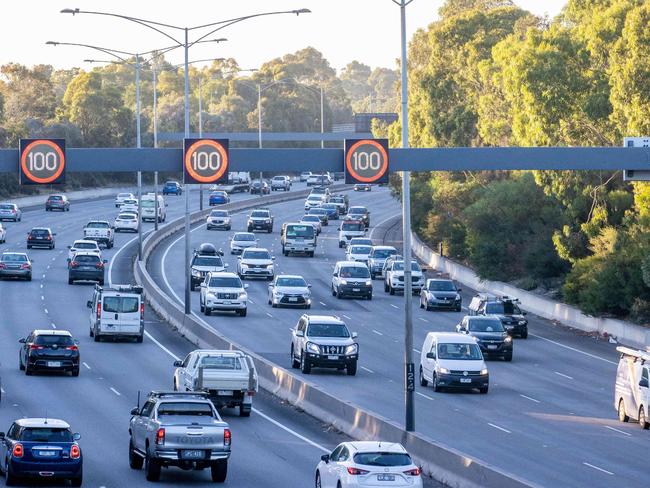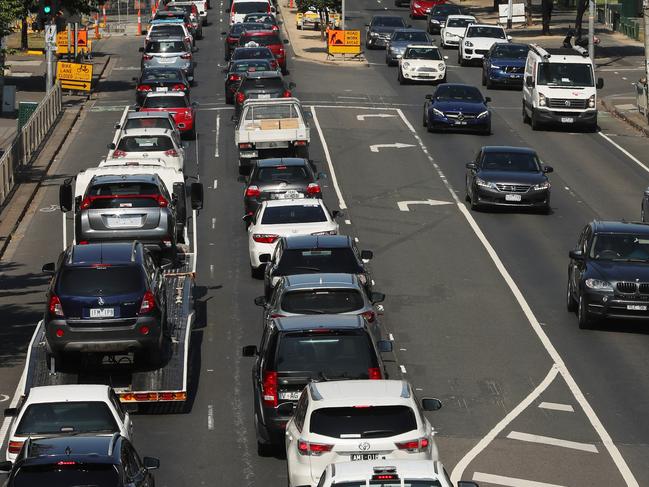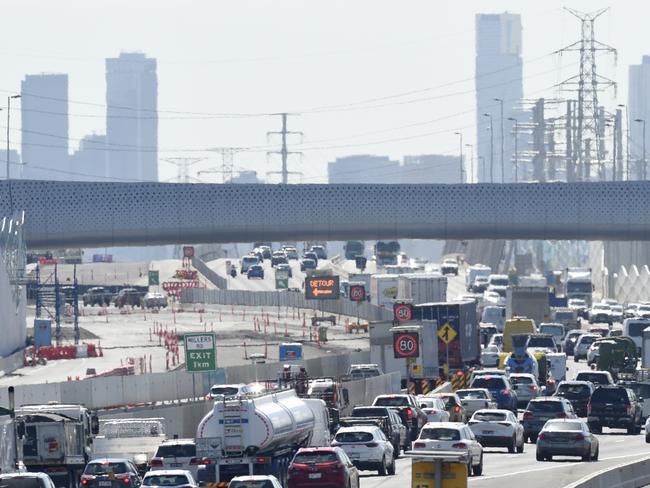Travel times on key Melbourne roads have doubled since workers returned to the office, data shows
Traffic on Melbourne’s key roads returned to pre-pandemic levels over summer and show no sign of easing. Here’s why.
Victoria
Don't miss out on the headlines from Victoria. Followed categories will be added to My News.
Travel times on key Melbourne roads have doubled as workers have returned to the office, with the Australian Open kickstarting a surge in CBD traffic.
New data from Here Technologies shows that Hoddle St journeys between Johnston St and Olympic Boulevard more than doubled after the Open, to 11 minutes, and have remained in this range.
During peak hours in March, average trips along this stretch rose to nine minutes.
Journey times on Nicholson St and Elizabeth St last week blew out to six and seven minutes respectively.

The Monash Fwy, which is currently being widened in sections, has also become more congested.
Motorists travelling between the Princess Fwy and Kooyong found their journeys extended from 22 minutes to January to as high as 31 minutes last week as vehicle numbers rose.
The data was collected by Here Technologies to measure the impact of the Open but analysts also found a more permanent increase in traffic that coincided with staff returning back to work.
Here Technologies general manager of Australian and New Zealand, Daniel Antonello, said the Open had felt like a turning point in bringing the city back to life.
“Our traffic data, powered by GPS sensors found in more than 160 million vehicles globally, validated that this was indeed the case — with travel times along some key routes more than doubling post-tournament,” Mr Antonello said.

“This could present challenges for infrastructure planners who may have been expecting more people to stay home longer in 2022, and as a result may need to rethink the transport network. “Melbourne traffic returning to pre-pandemic levels could also impact businesses who have become reliant on lower traffic levels to run their supply chains efficiently.”
Roadworks also had a major effect on trips along the West Gate Fwy in early March.
Peak hour times soared from a base level of 10 minutes to a whopping 56 minutes while lanes were closed for construction on March 3.
Motorists were forced to merge into a single lane, sparking chaos that led to traffic queuing back into the western suburbs.

Mr Antonello said the higher traffic numbers pointed towards a recovering economy.
“There is strong correlation between the movement of goods, people and services, and economic activity,” he said.
“We saw a slow down on both scores (movement and economic activity) in Melbourne over the last two years, which were heavily impacted by the Covid-19 pandemic and associated lockdowns.
“Location data is critical in understanding the world around us and helping to improve infrastructure management and inform smart city planning.”




